Choosing the Right SMD PCB Manufacturer: A Comprehensive Guide
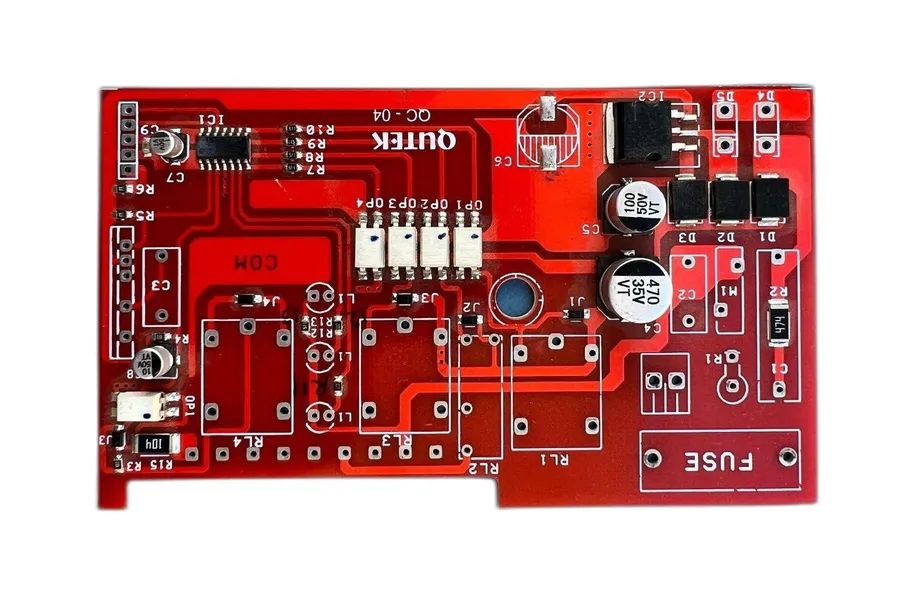
In today's electronic landscape, the demand for miniaturization and high performance drives the need for Surface Mount Device (SMD) printed circuit boards (PCBs). Selecting the right SMD PCB manufacturer is crucial for ensuring the quality, reliability, and cost-effectiveness of your electronic products. From hobbyists to large-scale industrial applications, understanding the nuances of SMT assembly and its manufacturing process is fundamental, bridging the gap between design and functionality. This article explores the key aspects of choosing the ideal partner for your PCB manufacturing needs, considering factors that affect both the product and your budget.
Understanding SMD PCB Assembly

Surface Mount Device (SMD) PCB assembly is the cornerstone of modern electronics, enabling the production of compact, efficient, and high-performance devices. This method involves mounting electronic components directly onto the surface of a printed circuit board (PCB), contrasting with through-hole technology where components have leads that pass through the board.
The core processes include precise solder paste application to designated pads, accurate component placement using automated pick-and-place machines, and reflow soldering, a process that uses controlled heat to melt the solder and create a permanent electrical and mechanical connection. This approach allows for higher component densities, smaller PCB footprints and streamlined automated manufacturing, making it essential for producing today's complex electronic devices.
| Feature | Surface Mount Technology (SMT) | Through-Hole Technology (THT) |
|---|---|---|
| Component Mounting | Components mounted directly on the surface | Component leads pass through holes in the board |
| Component Size | Smaller components, higher density | Larger components, lower density |
| Manufacturing | Automated assembly using pick-and-place machines | Manual or semi-automated assembly |
| PCB Size | Smaller board footprint | Larger board footprint |
| Cost | Generally lower cost for high-volume production | Higher cost for high-volume production |
Key Factors to Consider When Choosing an SMD PCB Manufacturer
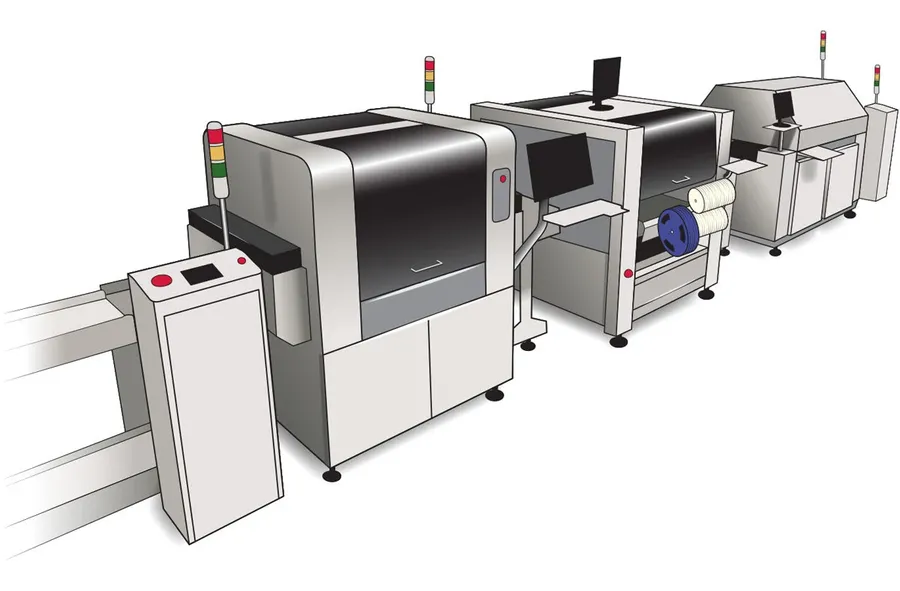
Selecting the right SMD PCB manufacturer is crucial for ensuring the success of your electronic projects. This requires a thorough evaluation of several critical factors that directly impact the quality, cost, and lead time of your PCBs. This section will explore the key parameters to consider when choosing a manufacturing partner, enabling you to make informed decisions that align with your project requirements.
- Manufacturing Capabilities
Assess the manufacturer's ability to handle various PCB types, including single-layer, multi-layer, and flexible PCBs. Verify the availability of required technologies and their capability to meet complex design specifications. - Assembly Capacity
Evaluate the manufacturer's production capacity to ensure it matches the volume requirements of your projects, both for prototyping and large-scale production runs. Their ability to scale with your needs is crucial. - Lead Times
Consider the turnaround times for PCB fabrication and assembly. Realistic lead times are vital for planning and meeting project deadlines. Confirm these times for your specific project needs. - Quality Control Processes
Inquire about the quality control procedures they have in place. Essential practices include Automatic Optical Inspection (AOI), X-ray inspection, and other testing methods to ensure high-quality and reliable PCBs. Ensure they comply with industry quality standards. - Material Sourcing Strategies
Examine their component sourcing process. A reliable supply chain ensures the quality of components used in your boards and mitigates risks associated with obsolete or counterfeit parts. They should have reliable suppliers for all parts. - Technological Expertise
Confirm that the manufacturer has a proven track record of producing the types of PCBs your project requires. They should possess specific knowledge relevant to your project's complexity and components. Check their specific experiences in similar projects. - Cost and Pricing Structure
Evaluate the overall costs and their pricing structure. Transparency and a clear pricing breakdown will help manage your project budgets effectively. Inquire about any additional fees for specific operations.
| Factor | Description | Importance |
|---|---|---|
| Manufacturing Capabilities | Ability to produce different PCB types and complexities. | Ensures your design can be manufactured. |
| Assembly Capacity | The volume of PCBs they can produce within a given time frame. | Meets project scaling needs. |
| Lead Times | Time it takes to complete the manufacturing process. | Meets project timelines. |
| Quality Control Processes | Methods used to ensure the quality and reliability of the PCBs. | Critical for product performance and longevity. |
| Material Sourcing | Where they source the components from | Ensures components meet quality standards. |
| Technological Expertise | Specific knowledge relevant to your project's complexity and components. | Experience with the product to ensure a higher quality result. |
| Cost Analysis | Detailed pricing structure including material costs and manufacturing operations. | Ensures your project stays on budget. |
Cost Analysis of SMD PCB Manufacturing
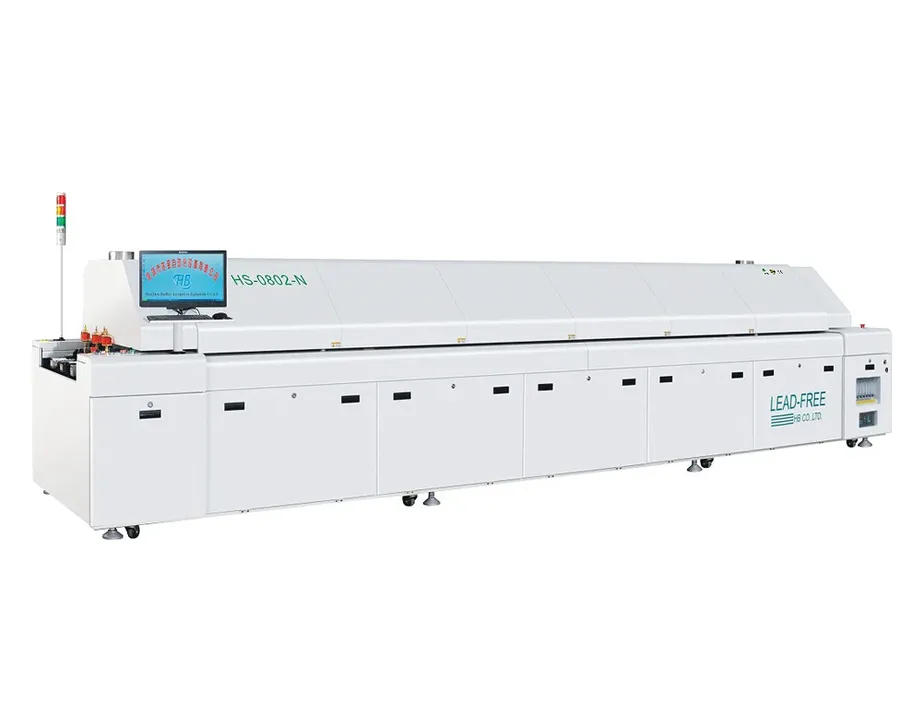
Understanding the cost drivers in SMD PCB manufacturing is crucial for effective budget management, whether you're producing prototypes or embarking on large production runs. The total expenditure is influenced by a range of factors, including design complexity, material selection, the quantity of components, and the overall production volume.
Cost Optimization Strategies: Optimizing your PCB design for cost-effectiveness is essential. This involves considering the number of layers needed, trace widths and spacing, and the number of vias. Standardizing component footprints and using fewer unique parts can also significantly reduce assembly costs. Furthermore, planning your project with expected volumes in mind can unlock volume discounts and reduce per-unit costs.
| Cost Factor | Impact on Cost | Cost Optimization Strategy |
|---|---|---|
| Design Complexity | Increased cost with more layers, finer trace widths/spacing, and complex shapes. | Simplify design when possible, use standard footprints. |
| Material Selection | Cost varies based on material type (FR-4, high-Tg, flex), thickness and copper weight. | Choose materials suitable for application needs, rather than high cost materials for basic applications |
| Number of Components | Higher component count leads to increased assembly time and cost. | Minimize component count by integrating functionalities, consider using more complex ICs. |
| Production Volume | Per-unit cost decreases with higher volumes due to economies of scale. | Plan for anticipated volumes to negotiate cost and schedule with manufacturer. |
| Assembly Process Complexity | Cost increase with complex processes such as BGAs, micro vias, and fine pitch components. | Design for manufacturability, when possible, to reduce cost of more complex processing. |
Low Volume vs. High Volume Production: Low volume production, which typically involves prototypes or small batches, generally incurs higher per-unit costs due to setup fees and lack of economies of scale. Conversely, high volume production benefits from lower per-unit costs, as fixed expenses are spread across a larger number of units and manufacturers can optimize their processes for efficiency. Understanding these dynamics is crucial in planning production runs effectively.
SMD PCB Manufacturer Certifications and Quality Standards
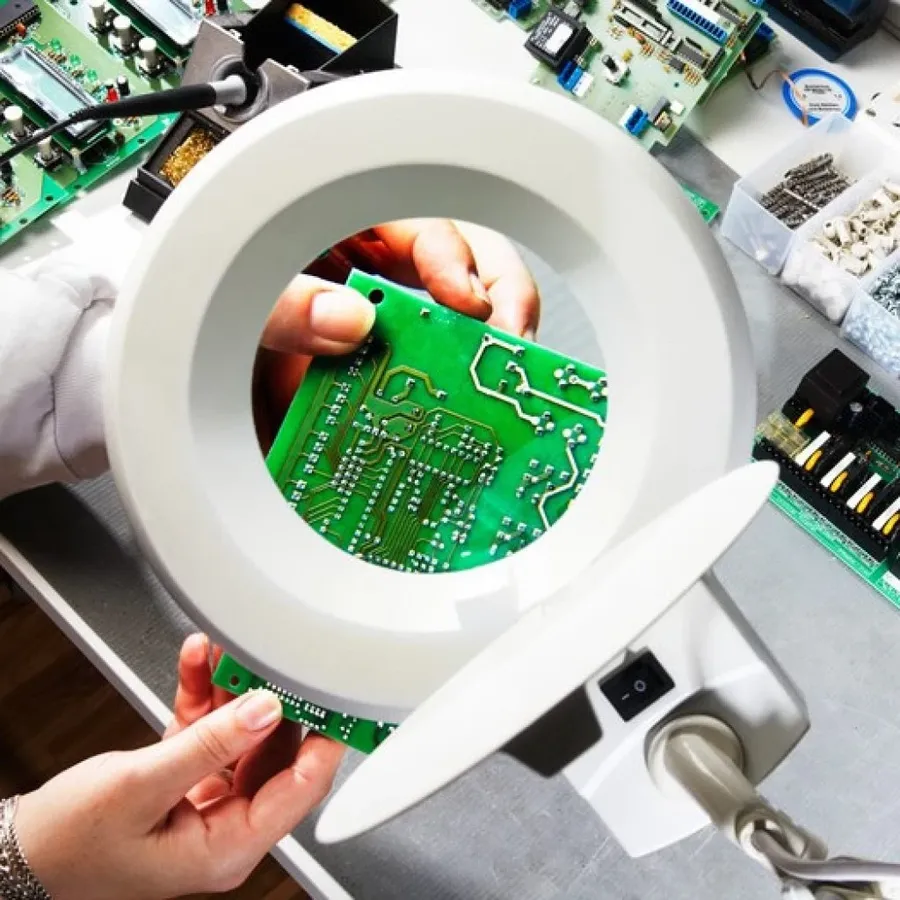
The reliability and quality of Surface Mount Device (SMD) printed circuit boards (PCBs) are paramount for electronic product performance and longevity. Selecting an SMD PCB manufacturer that adheres to stringent certifications and quality standards is essential. These certifications not only signify a manufacturer's commitment to excellence but also offer a standardized framework for consistent and dependable production.
Key certifications and standards in the PCB manufacturing industry include ISO 9001, which focuses on the quality management system, and IPC standards, which provide specific guidelines for PCB design, manufacturing, and assembly.
| Certification/Standard | Description | Implications for PCBs |
|---|---|---|
| ISO 9001 | International standard specifying requirements for a quality management system (QMS). | Ensures consistent production processes, product quality, and customer satisfaction. Manufacturers with ISO 9001 certification demonstrate commitment to quality and continuous improvement. |
| IPC Standards | Industry standards for PCB design, manufacturing, and assembly (e.g., IPC-A-600, IPC-A-610). | Guarantees that PCBs meet specific performance requirements and reliability levels. These standards provide guidelines for acceptable and rejectable criteria for PCB manufacturing. |
| RoHS Compliance | Restriction of Hazardous Substances, limits the use of specific hazardous materials in electronic products. | Ensures PCBs are environmentally friendly and safe. Compliance is often necessary for selling products in many regions. |
| UL Certification | Safety certification for electronic products and their components. | Indicates PCBs have met certain safety standards. Some applications require specific UL ratings for the final device to be approved. |
In addition to certifications, manufacturers should employ advanced testing and inspection methods, such as:
- Automatic Optical Inspection (AOI)
AOI systems use high-resolution cameras to visually inspect PCBs for defects such as solder shorts, opens, missing components, and misaligned parts. It is crucial for early identification and correction of manufacturing flaws, improving the quality and reliability of the final product. - X-ray Inspection
X-ray inspection is used to examine internal solder joints and component alignment, especially in complex packages like Ball Grid Arrays (BGAs) and other hidden or inaccessible solder joints. X-ray testing helps to ensure the integrity of the solder joint and identify hidden defects or misalignments. - In-Circuit Testing (ICT)
ICT tests the electrical functionality of individual components on the assembled PCB using a bed-of-nails fixture. This test verifies the circuit's integrity and provides component-level feedback, verifying the accuracy of the electrical design. - Functional Testing
Functional testing is the final verification step, involving testing the performance of the fully assembled board by simulating operational conditions. It ensures that the circuit board behaves as intended and meets design specifications. This test can identify issues that may arise due to component interactions or tolerance issues.
Turnkey vs. Consignment SMD PCB Assembly
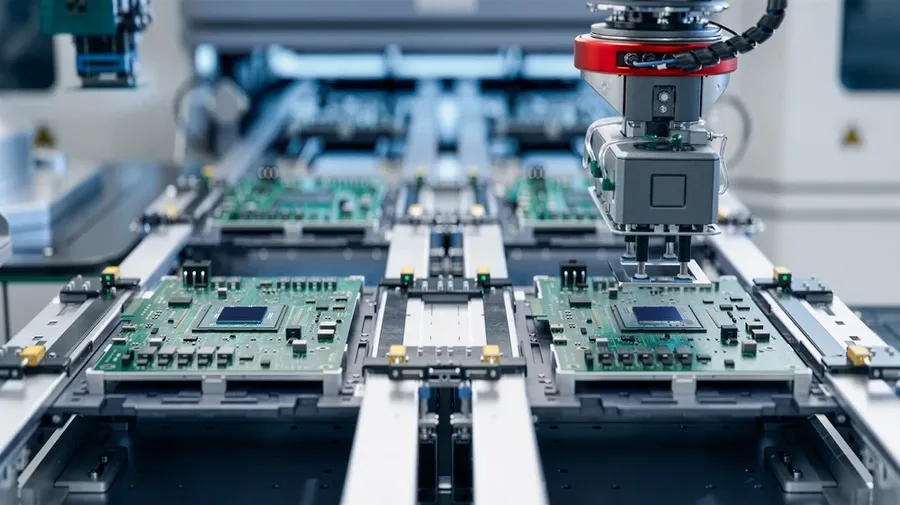
SMD PCB assembly offers two primary models: turnkey and consignment, each presenting distinct advantages and disadvantages based on project needs and resources. Understanding these models is crucial for optimizing cost, quality, and efficiency in your manufacturing process.
| Aspect | Turnkey Assembly | Consignment Assembly |
|---|---|---|
| Component Sourcing | Manufacturer procures all components | Customer provides all or some components |
| Control over Components | Less direct control, manufacturer selects components | More direct control, customer selects components |
| Cost Management | Simplified purchasing, potential for higher component cost per unit | Greater control over component costs, reduced per-unit cost potentially |
| Project Management | Simplified logistics, manufacturer handles all procurement, suitable for most projects | More complex logistics, requires inventory management, suited for specific needs |
| Risk Mitigation | Single point of responsibility, manufacturer takes on risk for component availability | Customer assumes some component risk, potentially affected by market fluctuations |
| Suitability | Ideal for projects where time and simplicity are critical | Best for projects where component control and cost are critical considerations. |
Turnkey assembly offers a streamlined approach where the manufacturer handles all aspects of component procurement, assembly, and testing. This model is suitable for projects where time is a priority, and the customer seeks to minimize their direct involvement in supply chain logistics. Consignment assembly, on the other hand, involves the customer providing some or all of the components. This offers a greater degree of control over the materials used and allows for potential cost savings, but it also increases the customer's responsibility for component sourcing, quality, and inventory management.
SMD PCB Assembly Frequently Asked Questions
This section addresses common questions regarding Surface Mount Device (SMD) PCB assembly, providing clarity on crucial aspects from lead times to design files and component management. A clear understanding of these elements is crucial for successful manufacturing projects.
- What are the typical lead times for SMD PCB assembly?
Lead times vary significantly based on several factors including the complexity of the PCB design, the quantity of boards required, the availability of components, and the manufacturer's current workload. Generally, prototype orders may range from a few days to a couple of weeks, whereas mass production runs can extend from several weeks to a few months. It's imperative to confirm timelines with your manufacturer during the quoting process. - How do manufacturers handle small batch versus mass production of PCBs?
Manufacturers typically adapt their production lines based on order volume. Small batch orders, often for prototyping or limited runs, are usually processed on more flexible lines allowing for quick setup and changeover. Mass production benefits from automated high-speed assembly lines optimized for volume efficiency. Both scenarios require meticulous quality control, although mass production employs more rigorous statistical process control. - What design files are needed by an SMD PCB manufacturer?
Manufacturers typically require Gerber files, which are standard for PCB fabrication. Additionally, a bill of materials (BOM) detailing all components, their specifications, and placement information is necessary for the assembly process. Some manufacturers might also request pick-and-place files for automated assembly. Ensure all files are accurate and adhere to the manufacturer's specifications to prevent delays or errors. - What component types are typically available for SMD PCB assembly?
A wide array of SMD components is available, including resistors, capacitors, inductors, diodes, transistors, integrated circuits (ICs), and connectors. These components come in standardized package sizes such as 0201, 0402, 0603, 0805, and 1206 for passive components and various QFP, QFN, and BGA packages for ICs. Always ensure that your chosen manufacturer can handle your specific component requirements. - How should I manage component obsolescence in SMD PCB assembly?
Component obsolescence is a significant concern. To mitigate this, work closely with your manufacturer on component selection, consider using parts with longer lifecycles, and evaluate potential alternative parts. Maintain a proactive approach, regularly checking component status and having redesign plans to ensure continuous production despite supply chain changes. - What are the common causes of delays in SMD PCB assembly?
Common causes for delays include inaccurate design files, unavailability of components, communication gaps, unexpected equipment downtime, and quality control issues. It is crucial to provide all necessary information to the manufacturer, stay in close contact throughout the assembly process and make sure the manufacturer has enough components for the assembly process. Transparent communication, thorough preparation, and clear expectations with your manufacturer are essential to minimize delays. - How is quality control performed in SMD PCB assembly?
Quality control in SMD PCB assembly involves several stages of testing, including but not limited to visual inspection, automated optical inspection (AOI), X-ray inspection, and functional testing. Manufacturers should implement stringent checks at each stage to ensure the boards meet the design specifications and standards, with AOI verifying correct component placement and solder quality, and X-ray checks ensure solder joint integrity, especially on BGA components. Functional tests verify overall circuit performance.
Comparing SMD PCB Manufacturers: A Practical Guide
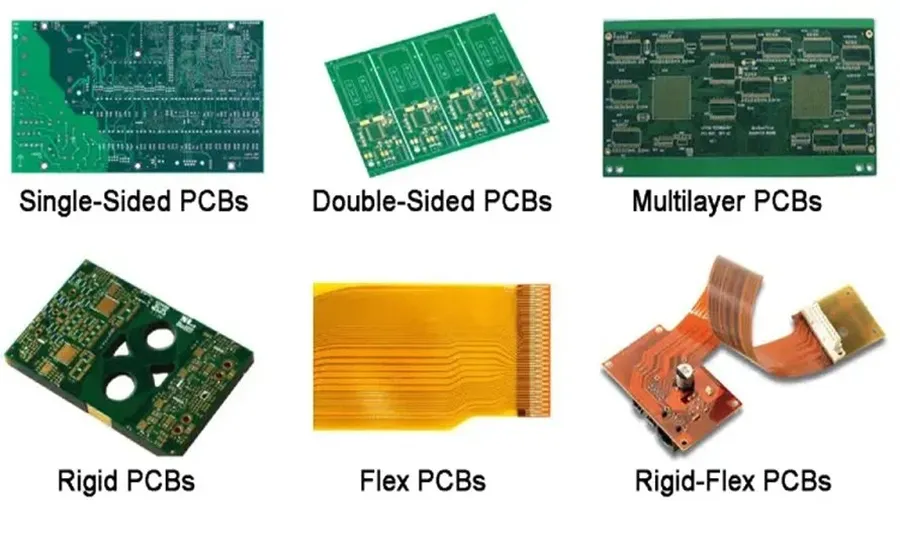
Selecting the right SMD PCB manufacturer is crucial for the success of any electronics project. This section provides a comparative analysis of key factors to help you evaluate and choose a manufacturer that best aligns with your project's specific requirements. We will focus on actionable metrics to guide your decision-making process, rather than a general overview.
| Factor | Description | Importance | Evaluation Metrics |
|---|---|---|---|
| Pricing | Cost per unit and total project cost including setup fees, tooling costs, and recurring costs for production runs. | High. Impacts budget feasibility and profitability. | Cost breakdown transparency, cost per unit for different volumes, quotation accuracy. |
| Service Quality | Responsiveness, customer support, communication and problem resolution capabilities. | High. Ensures smooth project management and prompt issue resolution. | Response times, availability of technical support, user reviews, communication effectiveness. |
| Manufacturing Capabilities | Range of PCB types, complexity, layer count, material options, tolerances. | High. Ensures ability to meet specific technical requirements. | Supported PCB types, minimum trace width and spacing, material certifications, special process availability. |
| Expertise | Experience with similar projects, technical proficiency, design for manufacturability (DFM) feedback, engineering support. | Medium. Contributes to project optimization and problem prevention. | Case studies, DFM support quality, engineering team experience and qualifications, problem-solving abilities. |
| Turnaround Time | Lead time from design submission to delivery, prototyping and production timeline. | Medium. Affects project timelines and market entry. | Quoted lead times for prototype and production, historical on-time delivery data, rush order options. |
| Additional Features | Specific testing, assembly service, component sourcing, supply chain management. | Medium. Can simplify logistics and improve quality. | Test process documentation, component sourcing network, supply chain risk management strategies. |
By using this table as a guide, you can objectively assess potential SMD PCB manufacturers based on your specific needs. Consider assigning weights to each factor based on your project's priorities. Always request detailed quotes and clarify all technical specifications before finalizing your choice.
Future Trends in SMD PCB Manufacturing
The landscape of Surface Mount Device (SMD) PCB manufacturing is rapidly evolving, driven by the ever-increasing demands for smaller, faster, and more efficient electronic devices. These advancements are not just about shrinking components; they're about fundamentally changing how PCBs are designed, manufactured, and integrated into products.
- Miniaturization
The push for smaller and more compact devices is driving the need for smaller components and tighter PCB layouts. This includes fine-pitch components, smaller vias, and thinner board materials. - High-Density Interconnects (HDI)
HDI technology enables more complex routing and higher component densities on PCBs. This involves techniques like microvias, blind and buried vias, and fine line traces. HDI is essential for applications requiring high performance in a small form factor. - Flexible PCBs
Flexible PCBs (FPCs) offer significant advantages in applications with constrained spaces or where dynamic movement is required. FPCs are becoming increasingly popular in wearable devices, automotive systems, and medical equipment. - Advanced Materials
The development of new materials is crucial for improving PCB performance. This includes materials with enhanced thermal properties, improved electrical characteristics, and better mechanical strength. Advanced materials are key to supporting high-frequency applications and operating in extreme conditions. - Additive Manufacturing (3D Printing)
Additive manufacturing or 3D printing for PCB fabrication is gaining traction for rapid prototyping and creating complex geometries. This technology offers unique design freedom and the potential for on-demand manufacturing, although it's not yet widely adopted for mass production. - Embedded Components
Embedding components within PCB layers is another significant trend, allowing for further miniaturization and increased functional density. This involves placing passive and active components inside the PCB structure instead of on the surface. - Automation and Smart Manufacturing
The use of automation, AI, and machine learning in manufacturing processes is significantly enhancing accuracy, speed, and efficiency in PCB production. This includes automated inspection, predictive maintenance, and real-time process monitoring, resulting in improved quality and shorter lead times.
Selecting the appropriate SMD PCB manufacturer is a multi-faceted decision, influencing the quality, cost, and timeline of your product. A deep dive into the core principles of SMD assembly, the key selection factors, cost considerations, and quality benchmarks will ultimately inform a better choice for your business needs. Whether you are a hobbyist or a large scale industry, choosing the right SMD PCB manufacturer will be beneficial in the long run, and ensure the best product quality for all applications and needs. This will also promote future technological advances through proper planning and execution.
 AnyPCBA
AnyPCBA